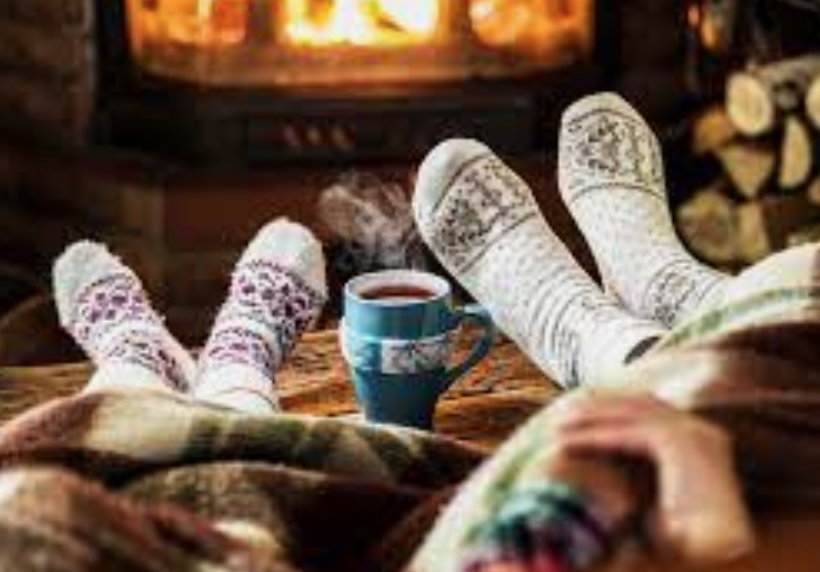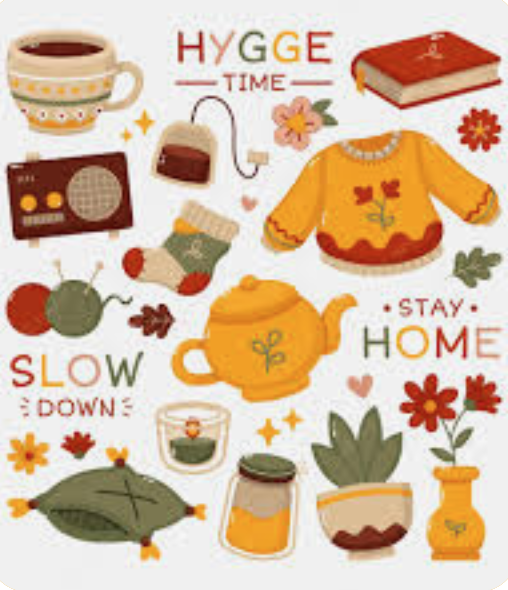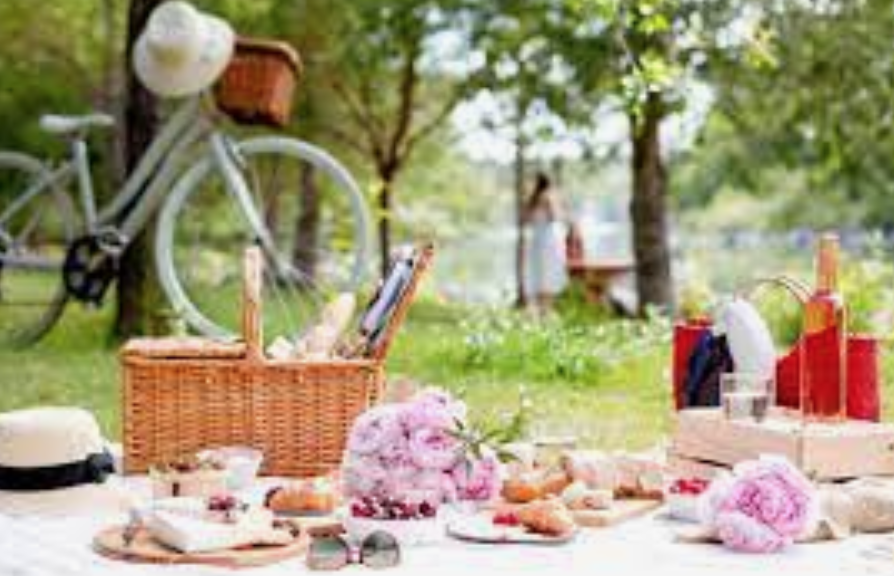Want to Feel Good? Try H—E.

There is More Good News Than Bad
Stephen, Grace, Einar and Helga had just returned to Grace and Stephen’s cabin after a long winter’s hike.
In spite of the vigorous activity, they were all a little chilled, adding to the discomfort caused by their general fatigue and sore legs.
While Helga and Einar started the fire, Stephen and Grace heated some cider. In short order the fire warmed the cabin and Einar lit some candles to add to the ambience. They wrapped blankets around themselves, then took their first sip of cider.
“Wow! This hits the spot,” said Grace, “and it sure feels homey and cozy.” “It is hygge,” said Helga. (pronounced Hooga) “What is that?” said Stephen and Grace in unison.
“Hygge is a Danish concept about nurturing oneself and creating a sense of well-being,” replied Einar.
“Some people call it hugging without touching, though we like good hugs too. We Danes have been practicing hygge since the early1800s and is a common behavioural practice of many Danish people. We even teach this concept to our children”
“I like this,” said Grace, “How do you make this happen?” “Many ways,” said Einar. “If you think of the concept in general, it is anything to nurture yourself and make you feel comfy and secure.” Pointing at the flickering flame he went on, “A popular component of Hygge is candles. The glow makes you feel good, though if you do not air your place out after you have put out the candles, the smell left can work the other way.” he chuckled.

“Candles give you light, something that is missing in Denmark for 5/6 months of the year. Getting together with a small group of friends and having a good conversation is a common, important and popular hygge practice, too” said Helga. “Most people believe smaller groups, such as the 4 of us together, provides a much better feel of intimacy, security and togetherness.”
“Sometimes, though, it is hard for newcomers to break into a group and we are often accused of being cliquish,” added Einar. He continued. “Food is also big factor in the hygge mix. Think of sweets, cake, buns, (a Danish) and other comfort foods, such as soups and food which warms you up.”
“Other contributors to Hygge might include a good book, music, harmony, being generous, showing gratitude, and warmth. Or having a hot drink, such as drinking coffee, particularly with friends in outdoor cafes.” Danes, in spite of a small population of 6 million, are the 4th largest consumers of coffee in the world They drink 30% more coffee per capita than Americans.
Danes also have an enhanced hygge focus at Christmas around decorations, festivals and modest gift giving, ensuring people feel equal. Summer Hygge foci include being outdoors, biking, bonfires, outdoor movies and BBQs with friends.

“Is it true Denmark is considered to be the happiest country in the world?” asked Stephen.
“Yes,” said Helga. (see May 2022 blog). “This is in spite of considerable cold, wet and overcast weather, and high taxes.”
“We, however, put many of our tax dollars into benefits that add to the general welfare of the people, leaving people with a greater feeling of certainty, less stress and less worry around health and well-being. We have excellent education and health care systems, generous pensions and are very creative in looking after our retirees. We have plenty of holidays, yet we are considered to be good workers.”
“We also measure well in our environmental practices. We make good use of alternative energy, particularly wind power; 80% of our energy comes from alternative energy. This conversion to alternate energy has been done without the loss of jobs. We are in the process of reducing our fossil fuel consumption even more. We are considered to be generous and are one of the few countries who meet the agreed upon U.N. goal of giving 7% of our GDP to international development.”
Helga flipped back to hygge, “There is a great book called, ‘The Little Book of Hygge,’ by Meik Wiking.” https://www.goodreads.com/en/book/show/30045683 “He founded the world’s first Happiness Research Institute in 2013, and some people call him the happiest person in the world. He believes Denmark scores high on the Happiness Index, in large part because of Hygge.”

Because Hygge encourages being together and strong relationships there is a sense of support for each other and much gratitude. There is also much freedom. He believes that all of this in turn translates into a good work/life balance and people-focused government policies. The good news, says Wiking, is greater happiness amongst the people.
Denmark is not the only country with this attitude. Norway calls it koselig, the Swedes, lagom, and the Dutch, gezelligheid. They all score high on the Happiness index. The Canadian equivalent, as stated by Grace, might be phrased as “homey” and “cozy.”
By now, the warmth of the fire had put them all almost to sleep, however, everyone got up, and had a good wake up shower before they sat down to eat.
Stephen and Grace had prepared a special comfort food meal of chili, supplemented with the wine brought by Helga and Einar.
“Time for bed,” said Grace, after some good conversation. “It is too late for the schnapps and the dishes can wait until tomorrow!” Soon they were all asleep, brought on by a wonderful day of … you guessed it hygge.
Till next time,
Chris Snyder
The Miracle of Cataract Surgery
You May Also Like

Saying Positive and Supportive Things to Others
August 13, 2023
Cambodia!
January 13, 2019